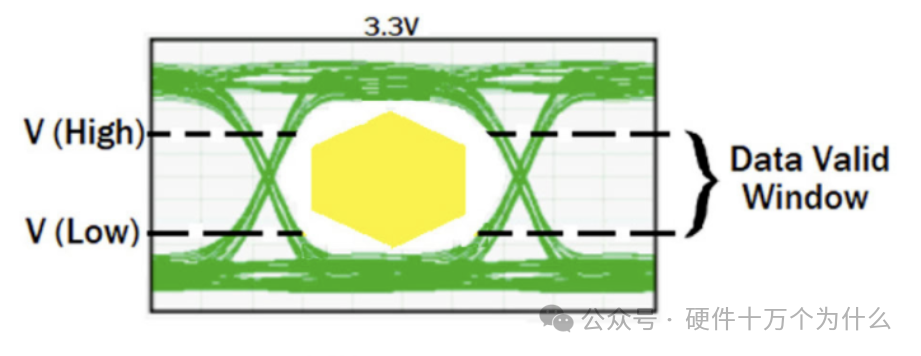

1. What is high-speed digital signal?
Normally, if the rise time of a signal is less than six times the length of its transmission line delay, the signal can be considered a high-speed signal. This ratio is a common empirical criterion used to determine whether a signal is in a high-speed state.
The waveform of a signal during transmission will undergo significant distortion and distortion, as the speed of signal change is much faster than the speed of signal propagation on the transmission line. In this case, there may be issues such as timing offset, waveform distortion, and jitter, which can affect the performance and reliability of the system.
Therefore, when designing high-speed digital circuits, it is necessary to consider the relationship between the rise time of the signal and the delay of the transmission line, and take corresponding measures to ensure the transmission quality and timing integrity of the signal. This may include using special transmission lines, adding signal compensation techniques, adjusting the parameters of drivers and receivers, etc.
The series of instantaneous waveform diagrams in the figure depict the potential of a signal transmitted along a 10 inch straight line. A 1ns rising edge is injected from the left end of the wiring. Obviously, as the pulse propagates forward along the path, the potential at each point is different. The response of this system to input pulses is distributed along the line, which we call a distributed system. The instantaneous waveform of the 4th ns shows that the actual length of this rising edge is 5.6 inches.
Similarly, pulses with the same rising edge time exhibit voltage differences at different positions on the 10 inch line. On the 1-inch wiring, the voltage difference at each point is relatively small.
So, for a 10 inch wiring, it is a distributed circuit and cannot be considered an ideal wiring, while a 1 inch wiring can be seen as a lumped circuit and can almost be considered an ideal wiring.
If the physical size of the system is small enough and all points respond to a unified potential simultaneously, it is called a lumped system. A 1-inch transmission line with the same 1ns rising edge in the figure exhibits a lumped system response. The potential of each part of the wiring is (almost) consistent throughout the entire duration. Distinguishing whether a system is distributed or lumped depends on the rise time of the signals flowing through the system. The distinguishing mark is the ratio of system size to the effective length of rise time.
Some authors of articles and books use 1/√ 2 π, while others use 1/4. The central idea is that the smaller the structural size, the lumped circuit, while the larger the size, the distributed circuit.
For printed circuit board wiring, point-to-point wiring, and bus structure, if the rising edge time is 4-6 times longer than the length of the wiring, the circuit mainly exhibits the characteristics of a lumped system. If the rise time is less than 4-6 times the length of the connecting line, it is considered a characteristic of a distributed system.
The rate of signal jump is so fast that the rising edge only requires six times the length of the line. (Even shorter)
For digital circuits, the key is to look at the steepness of the signal edge, that is, the rise and fall time of the signal. The time it takes for the signal to rise from 10% to 90% is less than 6 times the wire delay, which is a high-speed signal!
2. The difference between high-speed signals and high-frequency signals
High speed signals and high-frequency signals are conceptually different, although they are often cross applied in related fields. The following are their main differences:
High Speed Signals:
High speed signals usually refer to signals with very high transmission rates in digital communication or digital circuits. The transmission rate of these signals is usually measured in bits per second (bps), megabits per second (Mbps), gigabits per second (Gbps), etc.
The characteristic of high-speed signals is that their speed is very fast, and data will change at a high speed during transmission. These signals may encounter issues such as timing offset, waveform distortion, jitter, etc.
According to the definition of high-speed signals analyzed earlier, it is determined by the relationship between the time of the rising edge and the transmission time.
High Frequency Signals:
High frequency signals usually refer to signals with higher frequencies in the electromagnetic spectrum. These frequencies are typically within the range of radio, microwave, light waves, etc., represented in units such as Hertz (Hz), Gigahertz (GHz), Terahertz (THz), etc.
The characteristic of high-frequency signals is their high frequency, short period, and short wavelength. These signals may involve antenna design, RF circuits, microwave communication, and other fields.
Although in some cases, high-speed signals may involve high-frequency signals, such as fiber optic transmission used in high-speed digital communication or high-speed data transmission in microwave communication, their concepts and application areas are different. High speed signals emphasize the speed of data transmission and the accuracy of timing, while high-frequency signals emphasize the height of signal frequency.